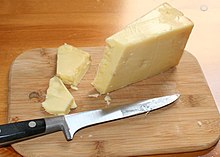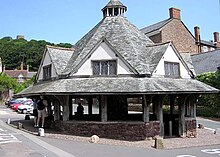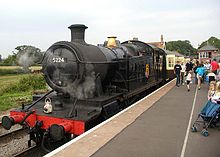Economy of Somerset

Somerset is a county in the south west of England. It is a rural county and transport infrastructure has been significant in industrial development. There is some heavy industry particularly related to the defence technologies and the county has several centres for stone quarrying, although the coalfield is now closed.
Agriculture and textile production continue to provide employment along with tourism.
Industry
Somerset has few industrial centres.
The
AgustaWestland manufacture helicopters in Yeovil. Helicopters were also built at Weston-super-Mare; it is now the home of a helicopter museum - The Helicopter Museum. Normalair Garratt, who built aircraft oxygen systems, are also based in the town; the company is now part of Honeywell Aerospace.
Many towns have encouraged small-scale
Defence industries
Somerset was, and is, an important supplier of equipment and technology to support the defence of United Kingdom. A
Agriculture and food and drink

Agriculture and food and drink production continue to be major industries in the county, employing over 15,000 people. Apple orchards were once plentiful, and Somerset is still a major producer of
Clothing

Towns such as
Mining and quarrying
Coal mining was an important industry in north Somerset during the 18th and 19th centuries, and by 1800 it was prominent in Radstock.[5] The Somerset Coalfield reached its peak production by the 1920s. All the pits have now been closed, the last in 1973.[6] Most of the surface buildings have been removed, and apart from a winding wheel outside Radstock Museum, little evidence of their former existence remains. Further west, the Brendon Hills were mined for iron ore in the late 19th century; this was taken by the West Somerset Mineral Railway to Watchet Harbour for shipment to the furnaces at Ebbw Vale in south Wales.[7]
The county has a long tradition of supplying freestone and building stone. Quarries at Doulting supplied the freestone used in the construction of Wells Cathedral. Bath stone is also widely used. Ralph Allen promoted its use in the early 18th century, but it was used locally long before then. It was mined underground at Combe Down and Bathampton Down Mines, and as a result of cutting the Box Tunnel, at various locations in Wiltshire, including Box.[8][9][10] Bath stone is still used today, on a reduced scale; but more often as a cladding, rather than a structural material.[8]
Further south,
Since the 1920s, the county has supplied aggregates. Foster Yeoman is Europe's large supplier of limestone aggregates, with quarries at Merehead Quarry. It has a dedicated railway operation, Mendip Rail, which is used to transport aggregates by rail from a group of Mendip quarries.
Tourism

Much of the county is scenic and unspoilt. Tourism is a major industry, estimated in 2001 to support around 23,000 people.[12] Attractions include the coastal towns, from the west to the north east,
Regional gross value
| Regional gross value added by the non-metropolitan county of Somerset at current basic prices. Figures are in millions of British pounds sterling.[13] | ||||
|---|---|---|---|---|
| Year | Regional Gross Value Added[A] | Agriculture[B] | Industry[C] | Services[D] |
| 1995 | 4,601 | 298 | 1,608 | 2,695 |
| 2000 | 5,872 | 199 | 1,936 | 3,737 |
| 2003 | 6,586 | 215 | 1,956 | 4,416 |
Notes
- [A]Components may not sum to totals due to rounding
- [B]Includes hunting and forestry
- [C]Includes energy and construction
- [D]Includes financial intermediation services indirectly measured
References
- ISBN 1-86077-363-X.
- ^ "Shock at factory closure news". This is the West Country. Archived from the original on 25 October 2008. Retrieved 29 October 2007.
- ^ "Mini profiles of the key industrial sectors in Somerset". Celebrating Somerset. Archived from the original on 15 September 2008. Retrieved 26 October 2007.
- ^ "Clarks ends shoemaking in Somerset". BBC Somerset. Retrieved 29 October 2007.
- ^ "A Brief History of the Bristol and Somerset Coalfield". The Mines of the Bristol and Somerset Coalfield. Archived from the original on 17 January 2009. Retrieved 22 January 2008.
- ISBN 1-84306-170-8.
- ISBN 978-1-899889-53-2.
- ^ ISBN 0-239-00066-8
- ISBN 0-434-06900-0
- ISBN 0-906230-26-8
- ISBN 0-7524-1049-0
- ^ "Employers in Somerset". Somerset Chamber of Commerce. Archived from the original on 4 September 2006. Retrieved 28 May 2006.
- ^ "Regional Gross Value Added (pp.240-253)" (PDF). Office for National Statistics. Archived from the original (PDF) on 1 December 2007. Retrieved 17 October 2007.
